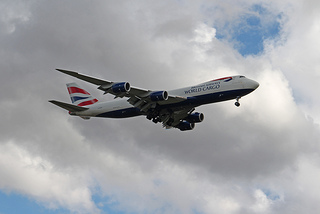 Asia-Pacific airlines registered the best regional performance in air cargo volumes in May, as global airfreight tonnage rose 7.5 percent year-over-year, according to an air cargo data provider.
Asia-Pacific airlines registered the best regional performance in air cargo volumes in May, as global airfreight tonnage rose 7.5 percent year-over-year, according to an air cargo data provider.
The strong international traffic growth for the month was accompanied by a minimal yield drop of only 0.2 percent. From April to May, yields fell by 1.9 percent, a not unusual seasonal phenomenon, said WorldACD.
In outgoing volumes, Asia Pacific stood out with growth of more than 10 percent in May y-o-y, followed by Central and South America with an 8.7 percent expansion, and Africa with 8.5 percent.
In incoming cargo, Africa and the Middle East did very well with y-o-y yields growing by 4.9 percent and 3.9 percent, respectively.
The data company said the May results reinforced the already positive year-to-date trend, leading to a 5 percent revenue growth for January-May 2014 compared to the same period in 2013. Yield differences between the individual months were less pronounced than last year.
Perishables as well as pharmaceuticals and temperature-controlled goods continued to grow more than other cargo. The last two categories also helped to keep the yield somewhat in check on its downward path—without them, the yield drop would have been 2.1 percent instead of 1.8 percent for the first five months of the year.
Still, WorldACD says this does not necessarily correspond to an easing of pressure to further decrease unit costs, “given the still wafer-thin margins in air cargo.”
On the other hand, Drewry Maritime Research says it sees global sea and air freight rates taking a downward angle over the next few months.
The research group based its latest predictions on airfreight rate trends on data showing a slow but steady slide downhill for air cargo pricing, as global airfreight traffic growth is restrained by weaker intra-Asia demand.
Increased belly hold capacity as a result of seasonal travel patterns will also play a hand in lowering overall air cargo pricing in the following months, it added.
Sea freight rates, meanwhile, will continue to exhibit volatility and unpredictability, even as freight tonnage is seen to expand in tandem with rising consumer confidence in the U.S. and Europe.
Drewry explained that while economic drivers of international trade are improving, which spells good news for air and sea transport, there are hardly any indications that cargo volume growth could be strong enough to hit double-digit levels, especially with the downturn in some emerging economies.
Photo: Martin D Stitchener




